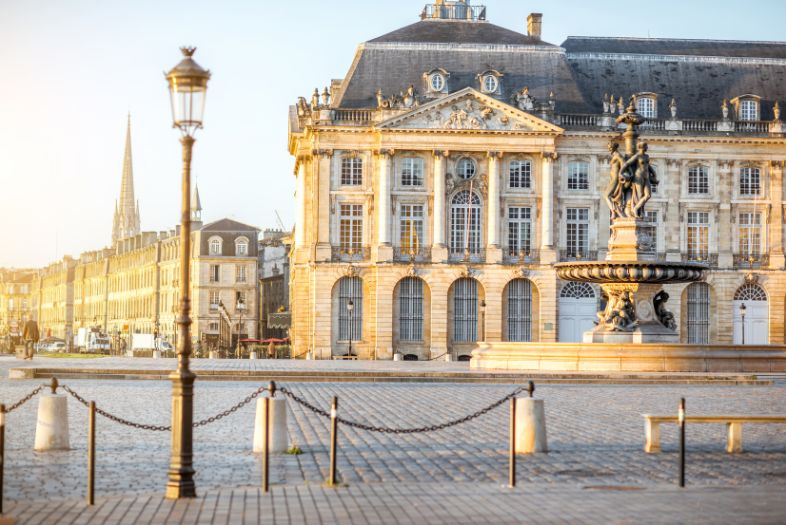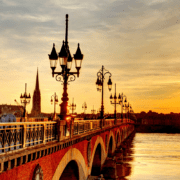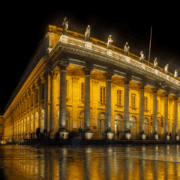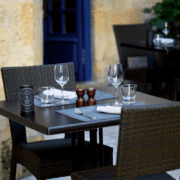
Bordeaux in March: spring in the heart of France
When spring finally arrives, many of us feel a sense of relief as the weather begins to improve and suggests a getaway, however short. For those looking for a short but magical trip, Bordeaux in March is a wonderful option.
If we had to describe this city in one word, it would be enchanting. It is so full of history, secrets and many tourist attractions that a free tour of Bordeaux is the best way to make sure you don’t miss a single detail.
Why should you visit Bordeaux in March?
Although Bordeaux will always be a great destination at any time of the year, there are a few extra reasons to visit during this time of the year to make your experience a wonderful one. Here are the reasons why you should visit Bordeaux in March.
- Pleasant climate: Spring comes, so temperatures start to rise gradually. The temperature is quite warm compared to other regions in Europe, centred around 15ºC. You will be able to enjoy more outdoor activities, without having to wear so many coats.
- Low tourist numbers: Although it is a very popular tourist destination, most travellers arrive between the months of May and October. This means that you won’t find large crowds at this time of year.
- Low season prices: As mentioned above, Bordeaux in March is still considered low season. You will find very attractive prices for both airline tickets and hotels, especially if you book in advance.
- First tastings: between March and April, the first tastings of last year’s vintage begin to take place in Bordeaux. You will have the chance to experience this first-hand.
- Many museums to discover: Bordeaux is a city of culture everywhere you look, which means that there are many museums and galleries to discover. In this month there are interesting exhibitions and you will have the advantage of not having to deal with crowds of tourists.
The magic of spring
Officially, spring runs from March to June, so this month has everything to make it the best time to visit Bordeaux. In fact, thanks to the region’s rapidly warming climate, Bordeaux starts to bloom much earlier.
From the first weeks of March you can enjoy parks and gardens bursting with colour. The heads of tulips are among the first to appear, while the blossoming fruit trees take centre stage in the landscape. From the meadows to the roadsides, you can see poppies slowly sprouting.
Traditional yet modern city
In case you didn’t know, Bordeaux has more than 2,000 years of history, which means there is a lot to discover and enjoy here. It combines the tradition of the old with the vibrant modernity of the present, while still retaining its charm.
If this is your first time in the city, here are some ideas for 10 things to do in Bordeaux:
Place de la Bourse and the Mirror of Water
Undoubtedly, the Place de la Bourse is one of the main monuments of Bordeaux. It was built between 1730 and 1775 and is located on the banks of the Garonne River. No matter what time of day or time of year you visit it, you will always find visitors, as it is a favourite place for locals and tourists alike.
Here you can admire the best examples of 18th century French architecture. For example, the Stock Exchange Palace, which is the Chamber of Commerce and Industry; the National Customs Museum, the former customs building; and the fountain dedicated to the Three Graces.
The icing on the cake is undoubtedly the Espejo de Agua. It is an esplanade of more than 3,450 m2 built in 2006 and is considered to be the largest in the world.
It is equipped with a series of jets or small jets of water along its entire length. Every so often, they release the liquid, causing it to fill up just a few millimetres, creating a beautiful mirror.
This is undoubtedly one of the best places to start your tour of the city and one of the most charming things to do for free in Bordeaux.
Cailhau Gate
As was the case in most European cities, Bordeaux was fortified during the medieval period, surrounded by an extensive wall and various gates giving access to the town. It was especially during the period of Intendant Tourny that the gates of Bordeaux were renovated. At that time, the triumphal arches became the main characteristic element.
There are six gates that you can visit in the city, although the most popular and best known is undoubtedly the Cailhau Gate. It is located on the banks of the river, just between the Place de la Bourse and the Porte de Bourgogne. It was built between 1493 and 1496 and is 35 metres high.
It is one of the most photographed points in the city and commemorates the victory of Charles VIII in the battle of Fornovo. The conical roofs and the sculptures on the façade of the king, John the Evangelist and Cardinal d’Epernay are outstanding features of its construction.
The Great Bell of Bordeaux
The Great Bell of Bordeaux, also known as the Grosse Cloche, in the heart of the city centre, is another place to enjoy in Bordeaux in March. It is also one of the oldest monuments in the city.
The base of the building where it stands was built in the 13th century, although the upper part was added in the 15th century. It served as a gateway to the city, with six towers in its entirety, although only two remain today, each 40 metres high and with a conical end.
It served as the official bell tower of the town hall and was used to notify important events such as grape harvests or fires.
You should know that this is not the original bell, as it has been replaced at least six times, as they broke. The last one was installed in 1775 by Jean-Jacques Turmel and weighs approximately 7,750 kilos.
This building was used as a prison in the past, so during your visit you will be able to see some of the cells that were used as a place of imprisonment.
Grand Théâtre and Place de la Comédie
The Grand Théâtre de Bordeaux, another of Bordeaux’s architectural gems, was built in 1780 by the famous architect Victor Louis. Developed in a pure neoclassical style, it has 12 columns and 12 statues on its façade. Of these, nine represent the Muses, while the remaining three represent the Greek goddesses Venus, Minerva and Juno.
For its part, the Plaza de La Comedia, located in front of the building, is a place for pedestrians only. It was built on the ruins of the city’s old theatre, which was destroyed by fire in 1756.



